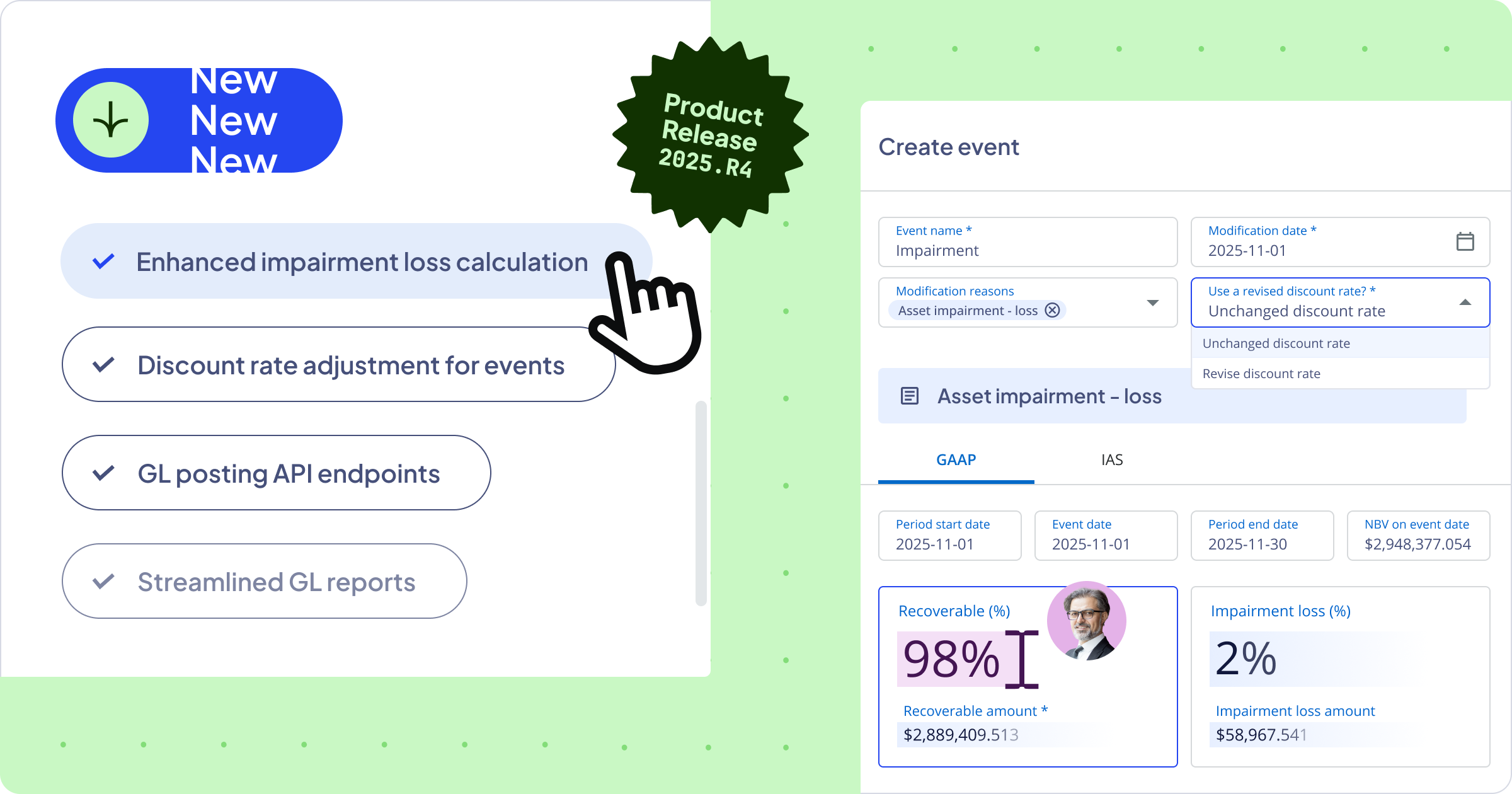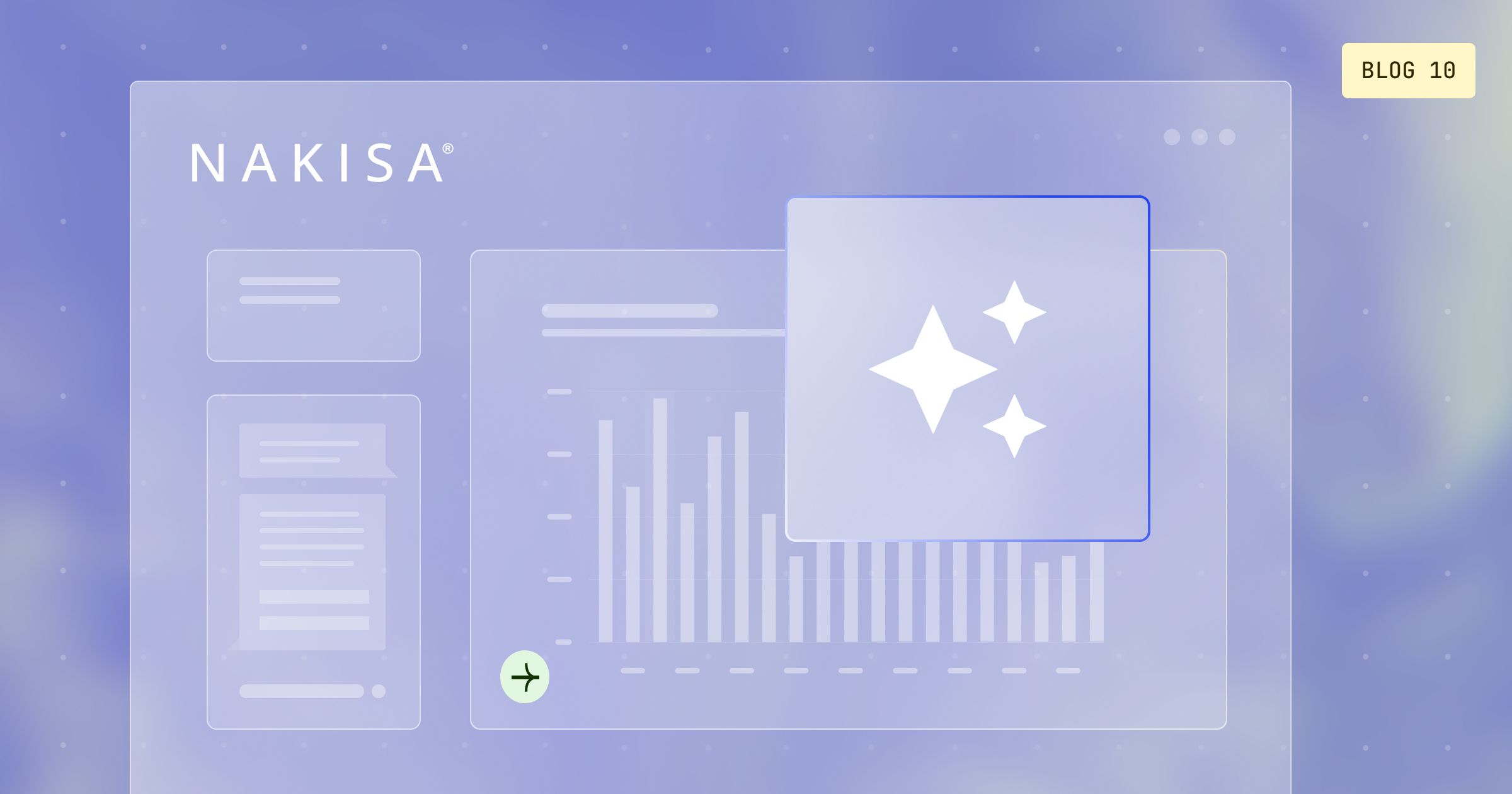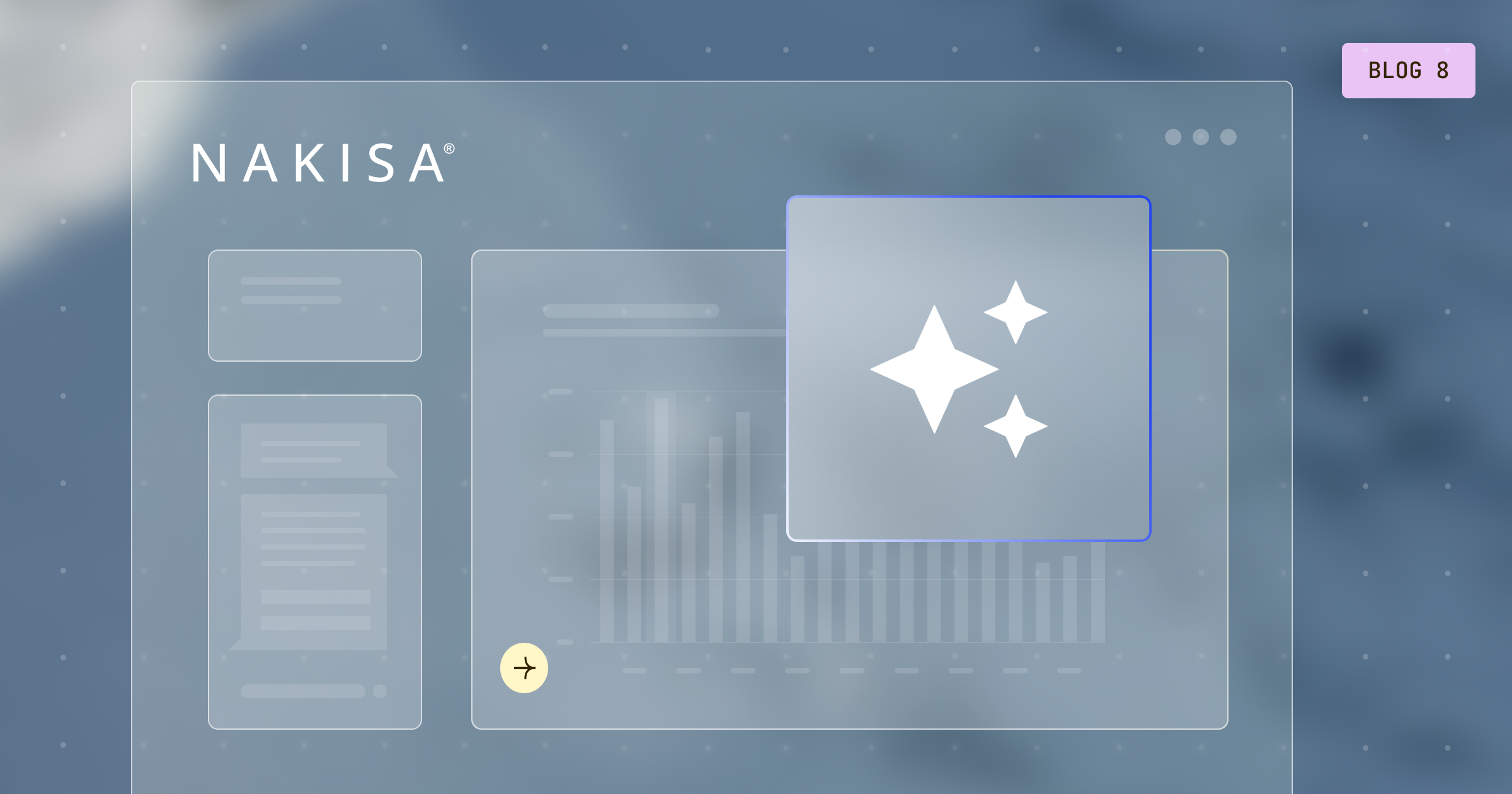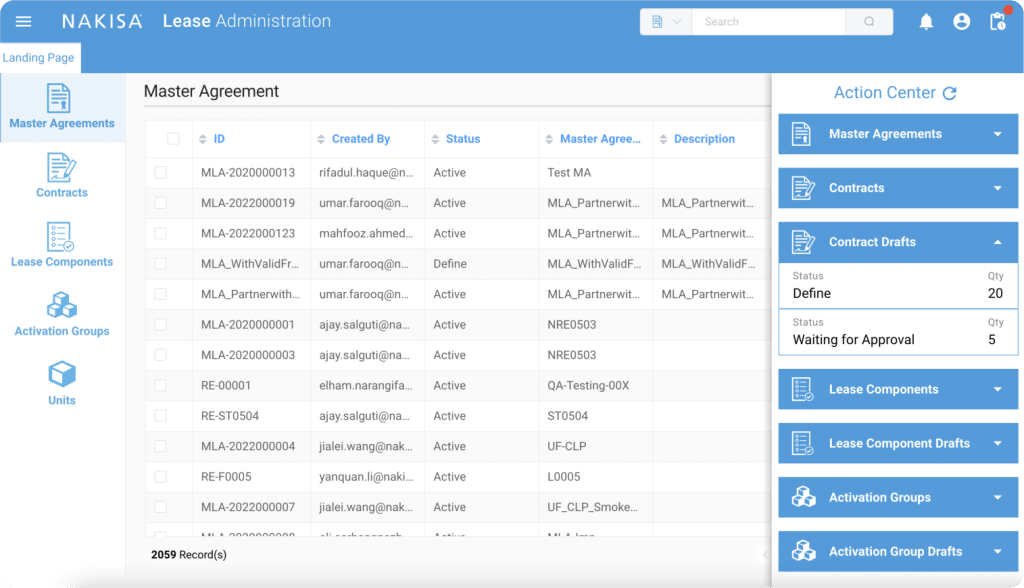1. Nakisa Financial Core
1.1 GL posting API endpoints: greater control and flexibility over postings and integrations
The 2025.R4 release introduces new API endpoints that allow clients to manage posting communications directly with the ERP system through APIs. This enhancement gives clients with in-house integration capabilities more flexibility and supports IT and security policies that restrict third-party bots.
With the availability of the new API endpoints, clients can now send the GL transaction details to their ERP system. The new endpoints include amounts, document types, and posting references. In addition, clients can now write back the External Document ID and External Posting Status to Nakisa once the posting is processed in the ERP system.
For example, a client can make an API call to retrieve the Nakisa posting documents and post to their ERP’s General Ledger. Once posted into their ERP, they can make another API call to retrieve the Document Number and Status from their ERP and update the Nakisa tables, providing end-to-end visibility to the user. This approach offers a client-managed integration model with full traceability and auditability within Nakisa GL, empowering finance and IT teams to automate and control posting processes independently.
Start using this functionality in Nakisa
A new user role, External Posting API User, provides secure access to the API endpoints. Assign this role to the users or service accounts that will access the API. Use the endpoints to retrieve ERP posting details for the desired Activation Groups or financial events. Once the external system processes the posting, write back the External Document ID and External Posting Status. All actions are tracked in Nakisa for auditability and traceability, while maintaining control and alignment with Nakisa’s internal audit and permission framework.
1.2 Streamlined user profiles: simplified user onboarding and access management
The 2025.R4 release introduces enhancements to user profiles that simplify onboarding and access management. Admins and security users can create users and assign authorization profiles before the first login, reducing back-and-forth and improving compliance with their internal access policies. Previously, system admins had to create each user, wait for them to sign in, and then assign their access rights, adding unnecessary steps and delays.
Now, access can be fully configured in advance. This helps ensure faster, smoother onboarding, reduces administrative overhead, and enhances client satisfaction by giving organizations more control and flexibility when managing any number of users.
Start using this functionality in Nakisa
A new “Create User” button on the User Profile page within FOS enables admins to enter the user’s email or username, assign the appropriate authorization profile, all in one step. The same logic applies to Excel imports: if a user does not exist, the system automatically creates the user and assigns the specified profile.
1.3 Master data sync settings report: enhanced visibility, traceability, and monitoring of synchronization jobs
The 2025.R4 release enhances the Master Data Sync Setting Report by including copied exchange rate master data elements. With this enhancement, users gain improved transparency and traceability for SAP synchronization activities. The updated report enables accounting and IT teams to quickly identify data mismatches between Nakisa and SAP, supporting faster reconciliation and more efficient troubleshooting.
Start using this functionality in Nakisa
The Master Data Sync Setting Report now includes copied exchange rate master data elements, providing a clear and auditable view of synchronization activities across systems.
1.4 General ledger report enhancements: more flexibility, traceability, and user experience
The 2025.R4 release introduces a set of enhancements to the Consolidated Transaction Report (CTR) and GL balance report, designed to make reporting more consistent and intuitive for reconciliation and analysis. These updates expand filtering options, improve metadata visibility, and ensure accurate results under all configurations.
- Improved object-based filtering in CTR: Users can now filter by Object or Profile, depending on what is enabled in Module Management. For example, if NLA is enabled but NPM is disabled, only NLA will appear as the source application, and only its objects will be selectable. The filter supports searching and copy-pasting multiple IDs, simplifying extraction for object-level reconciliations.
- New Journal State filter in CTR: Users can now filter transactions by Posted or Reversal, making it easier to isolate relevant entries during reconciliations, such as confirming that reversals from prior periods have cleared properly.
- Warning message for Parallel Currency configuration in GL balance report: A new warning message appears when Parallel Currency is disabled for an ERP system. Since this setting can result in incomplete or inaccurate data, the warning helps prevent misinterpretation of GL balances and ensures confidence in the report results.
1.5 UI/UX updates: greater consistency and usability across Nakisa applications
- General Ledger (GL) enhancements: Within Nakisa General Ledger (NGL), the Product Center link is now directly visible in the main menu, aligning NGL with other Nakisa applications such as Nakisa Lease Accounting (NLA) and Nakisa Portfolio Management (NPM). The NGL landing page has also been renamed to "Transaction Listing", clearly indicating that it displays all ledger transactions in a list format. These updates improve clarity, reduce confusion for new users, and ensure cross-product consistency when navigating between modules.
- FOS, SAP Sync Bot (SBP), and SAP Posting Bot (SSB) Enhancements: Across FOS, SBP, and SSB, dropdowns, filters, and Boolean values have been standardized to improve readability, usability, and data consistency. Key updates include alphabetical sorting (A–Z) for all dropdowns, display of both ID and Name for fields and search results, conversion of Boolean settings to True/False, enhanced date field filters, and consistent alignment of data across tables.
Together, these updates streamline the user journey, reduce context switching, and ensure a more intuitive and consistent experience for teams working across Nakisa applications.
Start using this functionality in Nakisa
Access the Product Center directly from the main menu across all applications. Navigate the Transaction Listing page to view ledger transactions efficiently. Enjoy more predictable and consistent filter behavior, search, and data presentation across FOS, SBP, and SSB.
2. Nakisa Lease Accounting
2.1 Activation group events enhancement: higher accuracy and control over financial events
The 2025.R4 release enhances accuracy and control over financial events at the activation group level, making key processes, such as impairment loss recording and discount rate adjustments, more precise, transparent, and audit-ready. Let’s dive into the details.
2.1.1 Impairment loss by percentage: streamlined financial event entry for better accuracy
The 2025.R4 release simplifies impairment loss handling. In addition to entering the impairment loss amount directly, users can now record impairments using either a recoverable amount or a percentage, with both fields automatically synchronized. This improvement assists with calculations, reduces input errors, and streamlines day-to-day workflows for accountants.
Previously, users could only enter the recoverable or impairment loss amounts, which often required additional calculations in Excel, especially when the percentage of impairment was known but not the exact amount. Now, users can simply enter a percentage (for example, 98% recoverable), and Nakisa automatically calculates the corresponding amount. Built-in validations prevent invalid entries (e.g., more than 100% or zero/negative percentages), ensuring data integrity.
Developed in collaboration with our clients, this enhancement not only streamlines data entry but also lays the groundwork for future mass impairment event support, helping finance teams handle large portfolios with greater accuracy and speed.
Start using this functionality in Nakisa
When entering an impairment loss event at the activation group level, enter either a recoverable amount or percentage. The system auto-fills the other value for convenience. Review and confirm the calculated data before posting.
2.1.2 Discount rate enforcement: more accountability in lease modifications
The 2025.R4 introduces a dropdown field for selecting the discount rate in lease modifications, replacing the previous checkbox. This update allows users to choose whether to retain or revise the discount rate during a lease modification. If required, this dropdown field can be preconfigured with default field values.
Developed in collaboration with our clients, this enhancement streamlines workflows and ensures discount rate decisions are deliberate and clearly reflected across all lease modification events.
Start using this functionality in Nakisa
When conducting any activation group (AG) event, a new Discount Rate Change dropdown appears as a required field. Users must select one of the following: “Revise Discount Rate” or “Unchanged Discount Rate”. The field defaults to blank to ensure active user input. Default field values (DFVs) can be configured to preselect an option for organizations that prefer to maintain the existing behavior.
2.2 User-defined posting & document dates in mass workflow: flexible batch control for accurate financial postings
The 2025.R4 release introduces enhanced flexibility and precision in mass workflow jobs by allowing users to define posting and document dates for key transitions such as Activate, Close, Reprocess, and Reclose.
Previously, all postings defaulted to Right-of-Use (ROU) start or end dates, which often didn’t align with real operational timelines. With this release, users can now define their own dates directly in the job interface or through Excel downloads at the activation group level. This update enables better alignment with internal approval and closure processes that may occur after the ROU start day in the case of activation or after the ROU end date in the case of closure. By introducing user-defined dates, Nakisa ensures greater consistency between manual and mass workflows while reducing effort for high-volume processing.
What’s more, the system now prompts users to re-enter posting and document dates during manual reprocess/reclose actions, ensuring manual workflows behave consistently with mass jobs. Additional validation prevents invalid job transitions, while audit log updates improve transparency and traceability across all postings.
This update is important for enterprises managing large, complex lease portfolios, where precise timing in financial postings is critical for both regulatory compliance and operational efficiency.
Start using this functionality in Nakisa
The new date type input in the mass workflow job screen applies to activation group–level transitions (Activate, Close, Reprocess, or Reclose) and is a mandatory field with two options:
- ROU start/end date (default): Uses ROU start date for activate/reprocess and ROU end date for close/reclose.
- User-defined (new): Allows users to enter posting and document dates that are different from ROU start/end dates.
When selecting user-defined dates, the same dates are applied to all contracts and activation groups included in the mass job profile. For scenarios that require different dates per activation group, users can choose a two-step workflow. Start by checking the “Use Default Workbook Input” option. The system will then generate a pre-populated Excel file containing all contracts and activation groups along with their associated posting and document dates. Users can update the dates in Excel as needed and upload the file back into the system to apply the changes. This approach is particularly useful for complex scenarios where different contracts require different dates, while still supporting straightforward processing for uniform date assignments.
By providing user-defined dates and granular configuration, Nakisa ensures that users can balance efficiency and flexibility: standard cases can be processed quickly with the one-step workflow, and complex use cases can be managed with the two-step workflow, ensuring tailored dates per activation group.
2.3 Exports and postings workflows: reduced errors and better alignment between batch and manual processes
The 2025.R4 release includes targeted usability improvements that streamline routine tasks, reduce clicks, and align batch behavior with manual workflows. These updates respond directly to our client feedback, making common processes faster, clearer, and more flexible, and helping manage large, complex lease portfolios with more confidence.
- Future-dated close for activation groups: Users can now enter future posting or document dates when closing activation groups, removing the previous validation that blocked these entries. If an exact date FX rate is unavailable, the system uses the nearest applicable prior rate.
- Enhanced ERP reversal reason selection in mass posting: Batch postings now allow users to choose from the full list of ERP-configured reversal reasons, matching the options available in manual workflows. With this enhancement, users can select a mass job profile and view the reversal reason. For profiles linked to a single ERP system, users can adjust the reversal reason as needed, providing the same control available in manual workflows. When a profile includes multiple ERP systems, the system automatically applies the ERP system default reversal reason to ensure accurate postings. This change improves consistency and reduces the risk of errors during mass postings.
2.4 Everyday workflows: enhanced clarity, visibility, and reliability
In 2025.R4, we focused on fine-tuning the details that make a difference in day-to-day operations.
- Exporting all-year schedules now takes one click. Checking the All Years box automatically includes the full ROU period in the export, reducing errors and aligning the export with the existing “View All” schedule functionality. Users can still override the range if needed, providing flexibility for custom exports.
- The external posting validation for lease end/close now ensures that all internal, and where applicable, external postings are complete before an activation group can be lease-ended. This enhancement prevents issues where external posting failures can’t be rectified and supports smoother posting workflows, with updated tooltips for clear guidance.
3. Nakisa Decision Intelligence
This October, we launched Nakisa Decision Intelligence (NDI), an enterprise-grade agentic AI platform designed to help leaders transform complex, siloed datasets into real-time strategic decisions and instantly execute them, all using natural language prompts (text or voice).
NDI can be used as a standalone solution or embedded across Nakisa products and integrated into existing workflows. Key capabilities include:
- Eliminates manual data preparation: Automatically unifies and contextualizes structured and unstructured data (such as ERPs, HCMs, Nakisa products, company policies, market data, and ad-hoc files), interpreting meaning and relationships without advanced setup or human-led training.
- Acts as strategic advisor: Answers complex business questions instantly with expert-level recommendations informed by your business context and industry knowledge. Guides the next best steps, helping leaders reduce uncertainty and make confident decisions.
- Enables fast, confident, and consistent decisions: Reduces analysis time from weeks to minutes while reusing verified logic and benchmarks across teams for consistent outcomes.
- Uncovers hidden opportunities: Connects financial, workforce, and asset data to reveal actionable insights that traditional analytics miss. Offers predefined, context-aware questions and smart follow-up prompts to surface insights that would otherwise remain hidden.
- Anticipates and mitigates risks: Uses predictive analytics, forecasting, and what-if simulations to identify potential challenges before they impact business outcomes.
- Empowers all decision-makers: Leverages simple natural language prompts, allowing anyone to access, explore, and act on enterprise insights, no technical skills required.
- Turns insights into action: Executes approved decisions directly through Nakisa AI agents and applies changes within ERP and HCM systems, streamlining workflows and reducing manual effort.
Request a demo of Nakisa Decision Intelligence here or contact your dedicated Client Success Manager to gain access to the preview environment.

Conclusion
The Nakisa Lease Accounting 2025.R4 release continues our commitment to empowering finance teams with practical, user-focused enhancements. From more precise activation group events and flexible posting controls to enhanced GL reporting, streamlined onboarding, and API-driven integration, every update is designed to reduce friction, increase visibility, and strengthen auditability. By addressing client feedback and fine-tuning everyday workflows, this release helps organizations better manage large, complex lease portfolios.
To explore the new capabilities in detail, browse the NLA demo catalog. You can also access additional resources in the Nakisa Resource Center or our Nakisa YouTube channel. For personalized guidance, schedule a demo with one of our experts.
Looking ahead, Nakisa will continue to innovate with future releases introducing AI-driven automation, advanced analytics and reporting, and collaborative features designed to drive operational excellence. Stay informed by subscribing to our monthly newsletter for the latest product updates, expert insights, and best practices delivered directly to your inbox.








